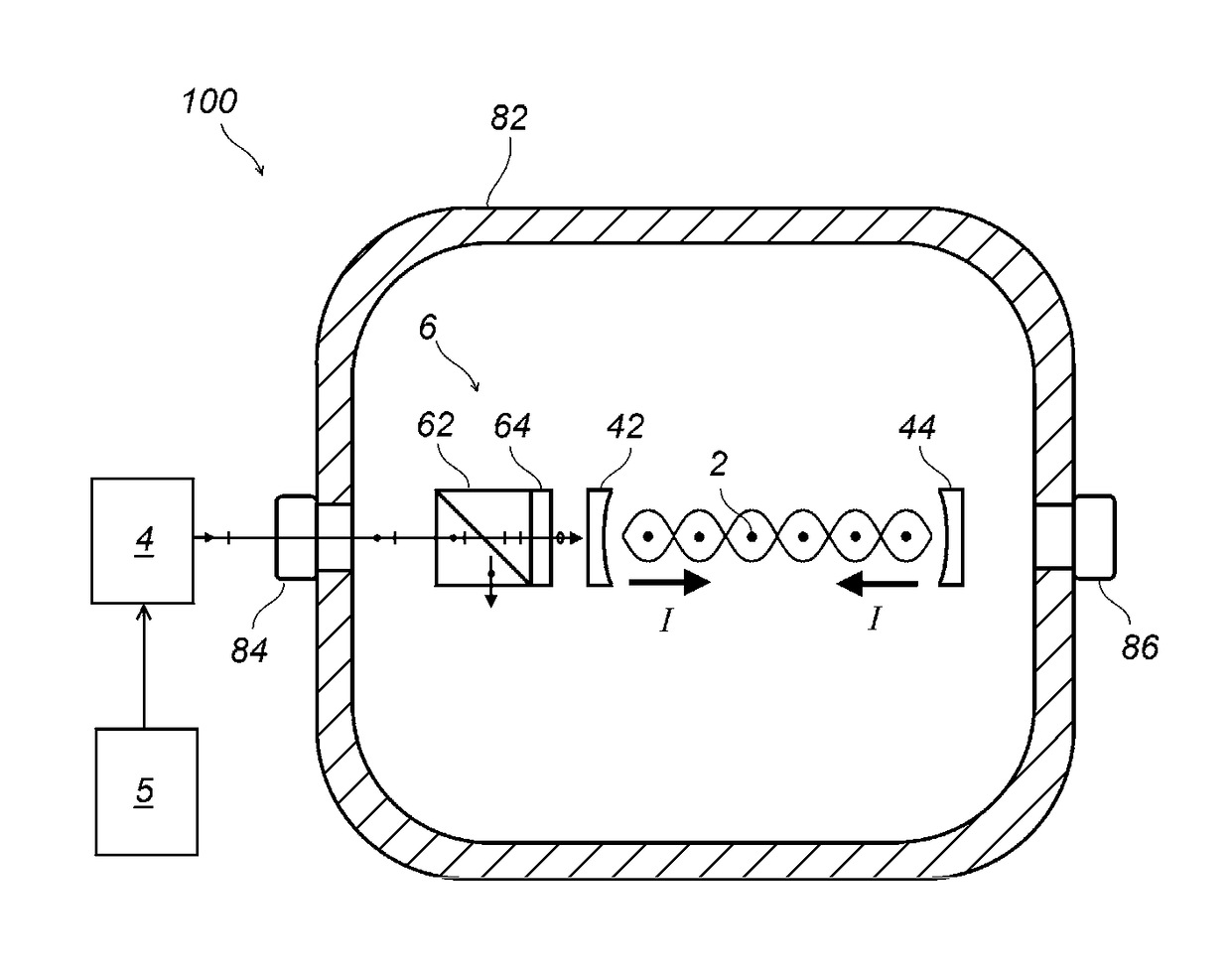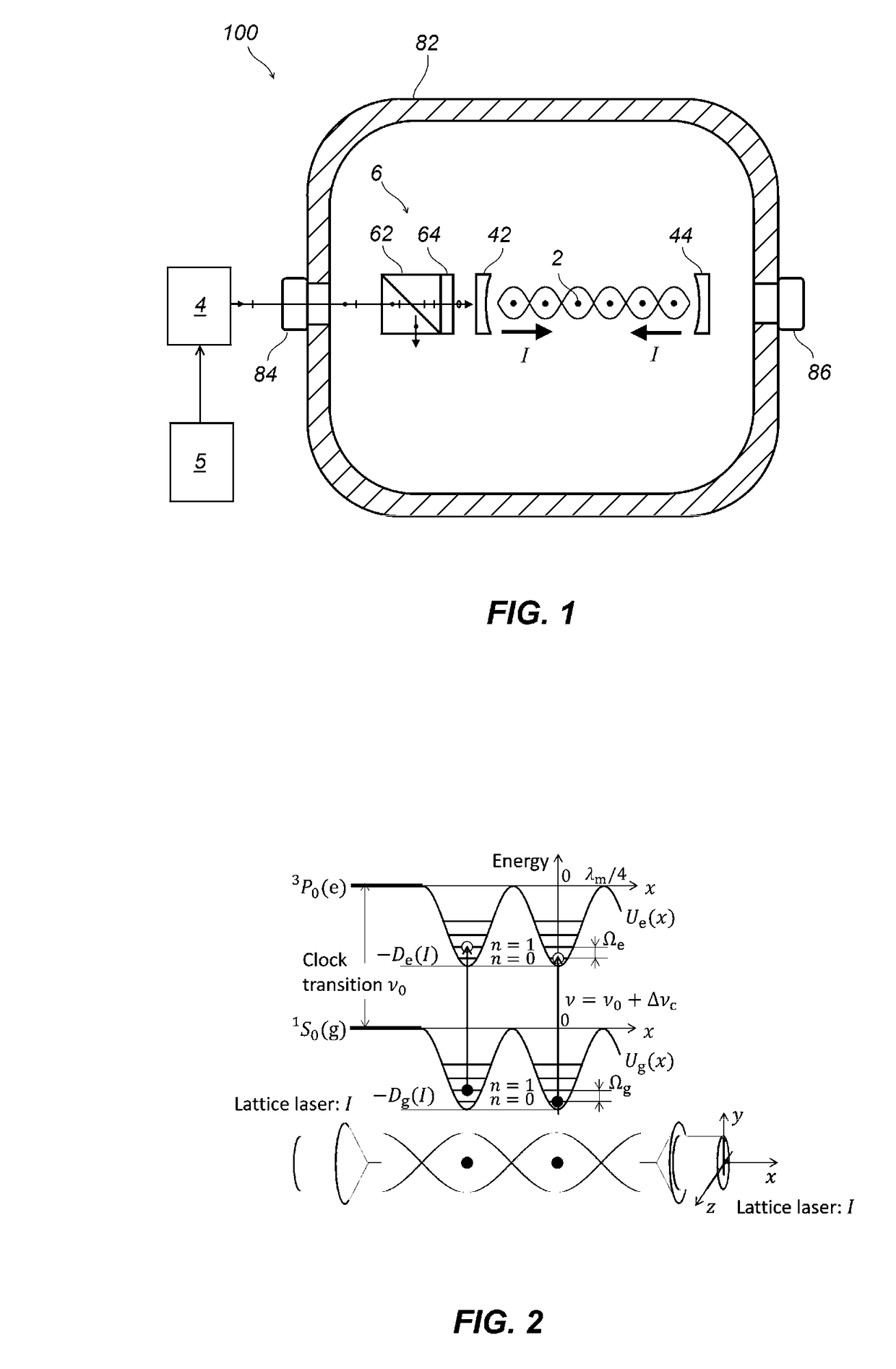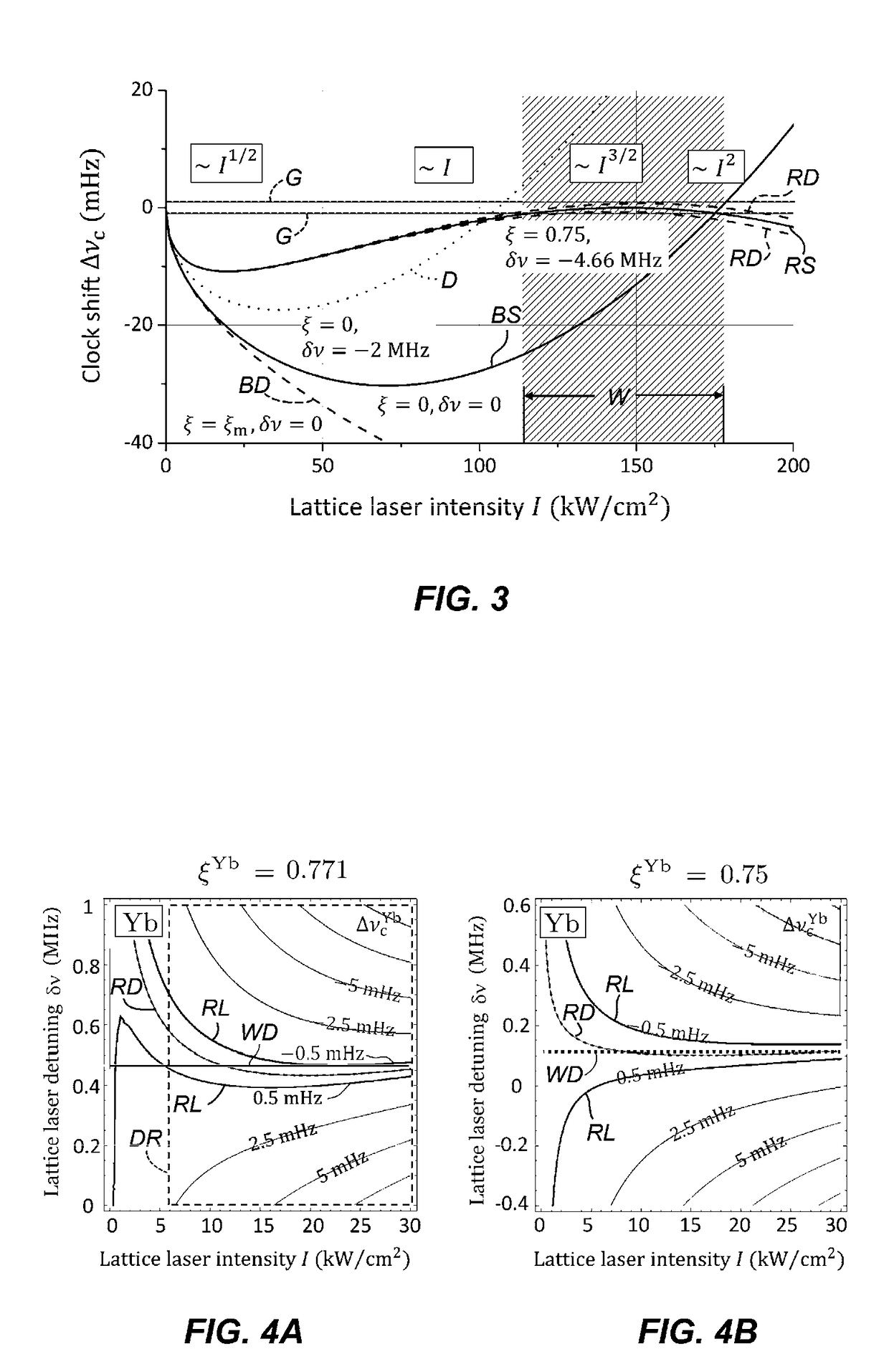Optical lattice clock at operational magic frequency and method for operating the same
a technology of optical lattice clock and magic frequency, which is applied in the direction of automatic control of pulses, electrical apparatus, and apparatus using atomic clocks. it is difficult to determine the optimal lattice frequency to confine atoms just by optimizing, and the lattice-lattice intensity i in the optical lattice clock is highly sensitive. it reduces systematic uncertainty, minimizes uncertainty, and is convenient to us
- Summary
- Abstract
- Description
- Claims
- Application Information
AI Technical Summary
Benefits of technology
Problems solved by technology
Method used
Image
Examples
Embodiment Construction
[0029]An embodiment of an optical lattice clock of the present disclosure is described below by referring to the drawings. In the following description, common parts or elements are indicated by common reference numerals over the entire drawings unless otherwise noted. In addition, each element in the drawings is not necessarily drawn to scale.
1. Structure of Optical Lattice Clock
[0030]FIG. 1 is a schematic diagram indicating an example structure of the optical lattice clock of the present embodiment. An optical lattice clock 100 measures transition frequency between electronic states of atoms 2. The atoms 2 are selected from a group of atoms or ions having clock transitions between long-lived states, and, in particular, from a group consisting of ytterbium (Yb), mercury (Hg), strontium (Sr), cadmium (Cd), zinc (Zn), magnesium (Mg), and calcium (Ca). Among the transitions of the electronic states of the atoms 2, a transition whose transition frequency is measured using laser spectro...
PUM
 Login to view more
Login to view more Abstract
Description
Claims
Application Information
 Login to view more
Login to view more - R&D Engineer
- R&D Manager
- IP Professional
- Industry Leading Data Capabilities
- Powerful AI technology
- Patent DNA Extraction
Browse by: Latest US Patents, China's latest patents, Technical Efficacy Thesaurus, Application Domain, Technology Topic.
© 2024 PatSnap. All rights reserved.Legal|Privacy policy|Modern Slavery Act Transparency Statement|Sitemap



